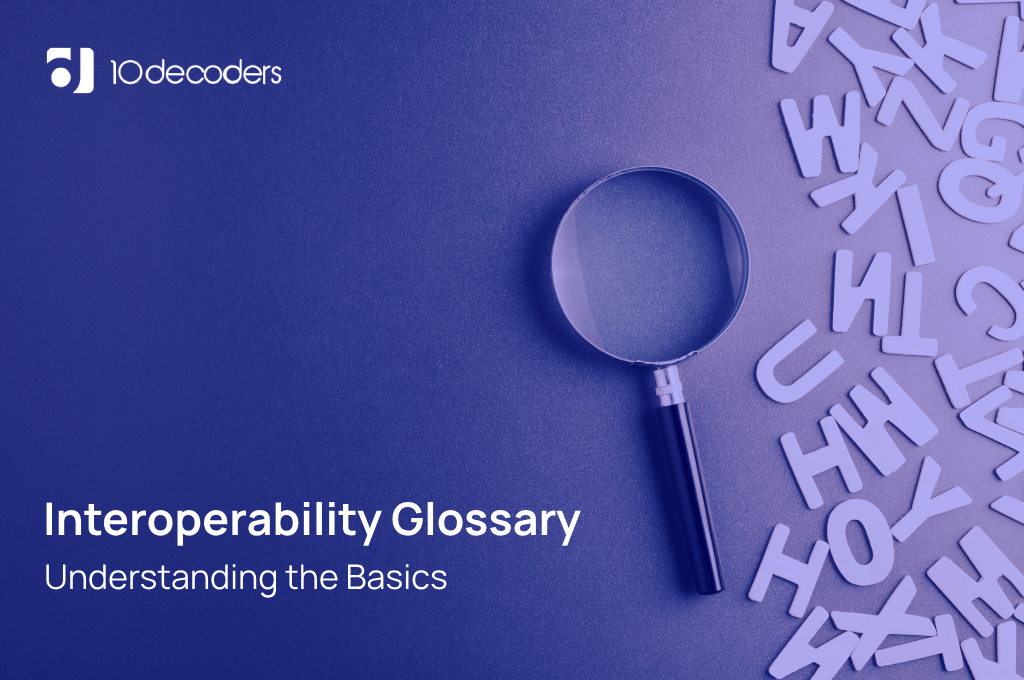Interoperability Glossary: Understanding The Basics
We have advanced to such a point in today’s world where your phone seamlessly talks to your fridge, ordering groceries when you run low. Or where your fitness tracker shares data with your doctor, providing real-time health insights. This interconnected utopia depends on something called interoperability, but navigating its jargon can feel like deciphering hieroglyphics. Interoperability can feel like a confusing maze, filled with technical jargon and complex concepts. But fret no more! This glossary is your friendly guide, shining a light on the key terms you need to navigate this interconnected world. Think of it as a decoder ring, unlocking the secrets of seamless data exchange between systems.
No need for fancy code words or cryptic acronyms. Here, you’ll find everyday language explanations for terms like “data formats” and “application integration,” making sure everything clicks even for tech beginners. So, grab your curiosity, explore this glossary, and become a master of interoperability! Remember, knowledge is power, and with this guide, you’ll be ready to confidently connect and collaborate in a world united by shared information.
1. Interoperability
At its core, it’s the ability of different systems or devices to understand and use each other’s information. Think of it as a universal translator for the tech world, ensuring things talk smoothly without needing adapters or workarounds.
2. Data Exchange
This is the actual transfer of information between systems. It’s like sending a message, but instead of words, it’s data packages carrying valuable information.
3. Standards
These are like the grammar rules of data exchange. They define how information is formatted, labelled, and transmitted, ensuring everyone speaks the same language. Without standards, it’s like trying to read a book written in Klingon – confusing at best, disastrous at worst.
4. APIs (Application Programming Interfaces)
Think of them as doorways between systems. Developers use APIs to access and exchange data, like knocking on a neighbour’s door to borrow sugar. Open APIs allow anyone to connect, while closed ones are more exclusive.
5. Syntactic Interoperability
This is the basic level, ensuring data formats and structures match. It’s like making sure your puzzle pieces have the same shape, allowing them to fit together.
6. Semantic Interoperability
This goes deeper, ensuring the meaning of the data is also understood. It’s like putting the puzzle pieces together and understanding the picture they create. Think of different currencies – both numbers might be formatted the same (syntactic), but their value is different (semantic).
7. Organisational Interoperability
This considers the bigger picture, including legal, security, and policy aspects of data sharing. It’s like setting ground rules for communication, ensuring everyone plays fair and data is protected.
8. Interoperability Levels
These categorise different degrees of interoperability. Level 1 (basic) ensures data can be sent and received. Level 2 (structural) adds format and organisation. Level 3 (semantic) focuses on meaning and consistency. Level 4 (organisational) tackles the broader social and legal considerations.
9. Integration
This is the process of connecting systems and making them work together seamlessly. It’s like building a bridge between islands, allowing information to flow freely.
10. Interoperability Benefits
The payoff is huge! Improved efficiency, better decision-making, enhanced collaboration, and streamlined processes are just some of the perks. Imagine doctors accessing your complete medical history from different hospitals or your smart home responding to your voice commands, regardless of the device brand.
Remember, interoperability is an ongoing journey, not a destination. As technology evolves, so does the need for adaptable solutions. But by understanding the basics, you can navigate this exciting world with confidence, ready to reap the benefits of seamless connections in your personal and professional life.



